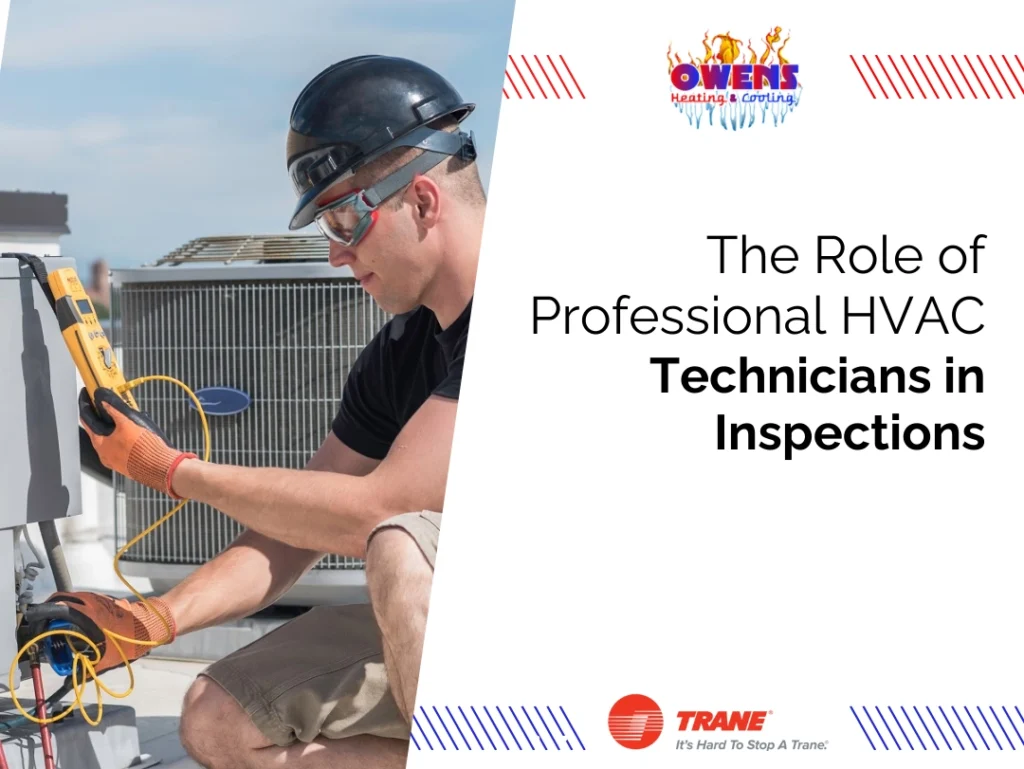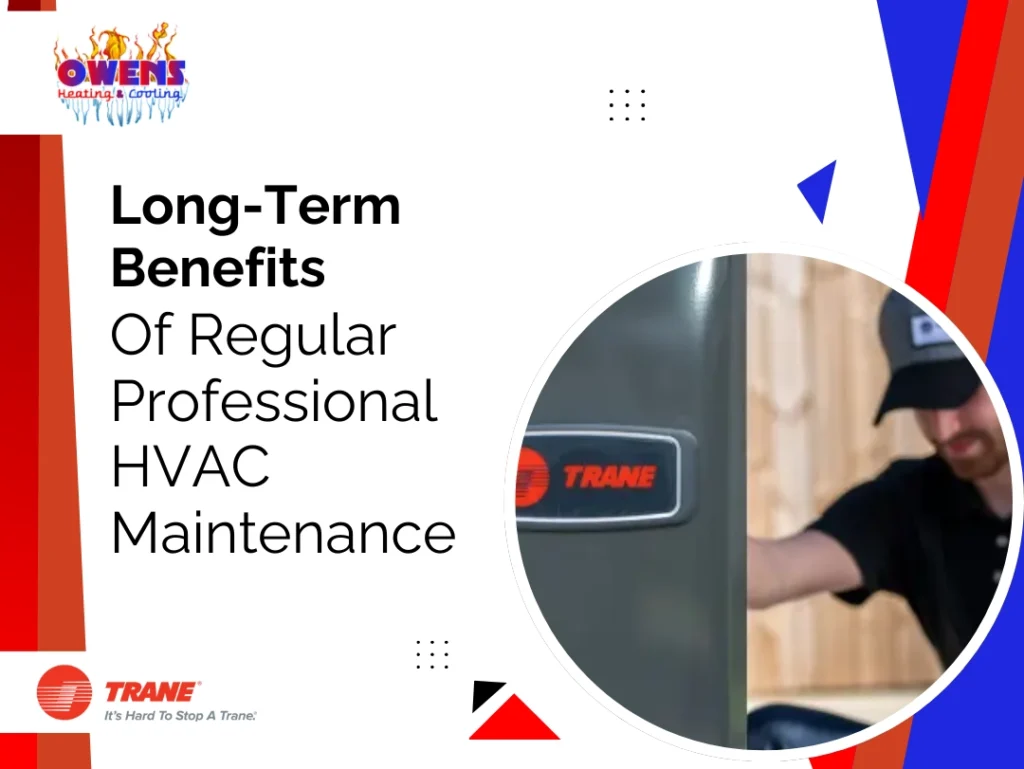Protect Your Home and Family with a Comprehensive Health, Safety, and Performance Inspection!
As a homeowner, you likely prioritize comfort within your living space, especially when it comes to maintaining a steady, pleasant indoor temperature. Your HVAC system plays a crucial role in this equation, particularly if you’ve invested in energy-efficient HVAC systems designed to optimize performance and reduce costs. However, even the most reliable heating and cooling units can falter without proper preventative maintenance. This is where Health, Safety, and Performance Inspections come into play. Understanding the significance of these inspections not only preserves the integrity of your home’s HVAC system but also cultivates a safe and healthy environment for you and your family.
As the fall breeze turns into winter’s bite, many homeowners rush to turn on their HVAC systems, expecting warmth and comfort. However, all too often, they’re met with an unpleasant surprise — their systems either don’t function correctly or not at all. Why does this happen? Many people neglect to schedule timely HVAC inspections, only realizing the importance of preventative maintenance when it’s too late.
By having your HVAC system inspected and maintained regularly, you may avoid freezing during the winter or being overheated during the summer. In this blog, we’ll explore the significance of preventative HVAC maintenance, the key components of health, safety, and performance inspections, and how a simple HVAC inspection checklist can help to ensure your house is cozy throughout the entire year.
What is an HVAC Inspection?
An HVAC inspection involves a thorough evaluation of your system to ensure it’s functioning correctly, safely, and efficiently. This process helps identify any potential problems before they become costly repairs. Regular maintenance can improve the lifespan of your system and keep it running at its best!
Why should you get an annual HVAC inspection?
An annual HVAC inspection is crucial for maintaining the efficiency, safety, and longevity of your heating and cooling systems. Regular inspections help identify and address minor issues before they escalate into major problems, potentially saving you from costly repairs. During an inspection, HVAC professionals thoroughly examine the system’s components, including filters, coils, and ductwork, ensuring they are clean and functioning optimally. This proactive approach not only enhances system performance but also improves indoor air quality and energy efficiency. Furthermore, yearly maintenance can prolong the life of your HVAC system and avert unplanned malfunctions, giving you peace of mind and guaranteeing year-round comfort.
Health Inspections: Ensuring Clean Air and a Healthy Environment
A major, often overlooked, aspect of HVAC maintenance is the impact it has on the air quality in your home. During the fall and winter months, people spend more time indoors, and your HVAC system becomes responsible for circulating air throughout the home. Serious health issues may arise as a result of poor maintenance.
Improved Indoor Air Quality (IAQ)
One of the critical components of HVAC maintenance is ensuring clean air. Dirty air filters, clogged ducts, and mold buildup can introduce pollutants into your home, leading to respiratory issues. This is especially concerning for individuals with asthma, allergies, or other respiratory conditions.
- Air Filter Replacement: A professional HVAC technician will inspect and replace dirty filters, which can collect dust, pet dander, and allergens over time. Replacing these filters regularly helps prevent contaminants from circulating in your home.
- Duct Cleaning: Over time, dust and debris can accumulate in your ducts, reducing the efficiency of your system and negatively impacting indoor air quality. A comprehensive HVAC inspection will include a ductwork evaluation, ensuring air flows cleanly and
efficiently through your system.
Health Hazards from Poor Maintenance
If you neglect your HVAC system, you’re risking more than just comfort. A neglected system can harbor mold, mildew, and other allergens that worsen indoor air quality. This could cause headaches, dizziness, fatigue, and even more severe conditions over time. By reducing these dangers and guaranteeing that the air you breathe is clean and healthy, preventative inspections can help.
Safety Inspections: Protecting Your Home and Family
Your HVAC system isn’t just responsible for heating and cooling — it plays a significant role in keeping your home safe. Regular HVAC inspection checklists should always include safety checks, as faulty equipment can pose serious risks.
Electrical Safety Checks
An HVAC system involves electrical components that can wear down over time. Loose wiring or blown fuses can create serious safety hazards, including electrical fires. As part of a safety inspection, HVAC technicians will carefully examine all wiring, fuses, and connections to ensure they are in good condition.
Gas Line and Heat Exchanger Inspections
If your HVAC system uses gas for heating, a cracked heat exchanger can lead to a potentially deadly carbon monoxide leak. This odorless, colorless gas can fill your home without you knowing, putting your family at risk. A proper safety inspection will involve a thorough examination of the heat exchanger and gas lines to detect any issues early.
Proper Ventilation
Safe evacuation of dangerous gases such as carbon monoxide from your home is guaranteed by adequate ventilation. During the inspection, technicians will evaluate the ventilation system to ensure it’s functioning correctly. Poor ventilation can lead to the accumulation of dangerous gases, putting your household at risk.
Performance Inspections: Maximizing Efficiency and Comfort
In addition to health and safety, HVAC inspections also focus on system performance. A poorly functioning system can lead to uneven heating, high energy bills, and uncomfortable living conditions. Performance inspections assist in resolving these problems and guarantee the seamless and effective operation of your HVAC system.
Thermostat Calibration
Have you noticed that your home doesn’t quite reach the temperature you set on the thermostat? That could be due to poor thermostat calibration. A professional HVAC inspection will ensure that your thermostat is properly calibrated, providing accurate temperature readings and maintaining comfort throughout your home.
Refrigerant Levels and System Pressure
Low refrigerant levels can lead to inefficient heating or cooling, causing your system to work harder and consume more energy. During an HVAC performance inspection, the technician will check refrigerant levels and ensure that system pressure is optimal. Keeping these at the right levels is crucial for maintaining an energy-efficient HVAC system.
Seasonal Adjustments
The demands on your HVAC system vary with the seasons. Your system will be prepared for both the summer’s heat and the winter’s cold if it has a performance inspection. Adjustments to the system’s settings can help maintain energy efficiency year-round, ensuring comfort without wasting energy.
Overall System Evaluation
A performance inspection also involves checking critical components like motors, compressors, and fans. If any of these parts are worn down or not functioning properly, it could lead to a complete system breakdown. A thorough evaluation will identify potential problems early on, saving you from expensive repairs later.
The Role of Professional HVAC Technicians in Inspections

While some homeowners may think they can perform HVAC inspections themselves, the reality is that professional technicians have the tools and expertise to catch issues the average person would miss. DIY inspections often overlook key components, leading to inefficiencies and missed safety hazards.
Why You Shouldn’t DIY
HVAC systems are intricate due to their complex electrical, mechanical, and ventilation components. Inspecting or fixing these systems without the necessary expertise may cause more harm than good. Professional technicians are trained to spot issues you might miss and can address them properly, ensuring your system is running as efficiently and safely as possible.
Comprehensive HVAC Inspection Checklist
A professional HVAC technician will follow a detailed HVAC inspection checklist to ensure every aspect of your system is functioning correctly. This checklist includes items such as:
- Test voltage and inspection of electrical components for failures
- Lubricate moving parts
- Check and replace the air filter
- Inspect the condensate drain for blockages
- Test thermostat settings and calibration
- Inspect electrical connections
- Evaluate installation quality
- Inspect the HVAC appliance condition
- Test safety controls
- Assess airflow for issues
- Inspect blower components
- Check refrigerant pressure
- Test gas piping and pressure
- Test the heating mode and defrost cycle of the heat pump.
- Inspect the condensate drain for clogs
Following this checklist helps ensure nothing is overlooked, leading to better performance and fewer surprises down the road.
Long-Term Benefits of Regular Professional HVAC Maintenance

Regular professional maintenance offers long-term benefits, including reduced repair costs, lower energy bills, and extended system life. Plus, many HVAC system warranties require professional maintenance to remain valid. You may prevent expensive repairs by making sure that your guarantee is upheld by scheduling routine inspections.
What to Expect During an HVAC Inspection
A trained expert will thoroughly assess your system during an HVAC inspection. Here’s what you can expect:
Initial Assessment: The technician will review your system’s history and any previous issues to understand its current condition.
Detailed Inspection: The technician will follow a detailed checklist, examining each component of your HVAC system.
Performance Testing: The technician will test the system’s performance, including checking airflow, refrigerant levels, and system controls.
Recommendations: After the inspection, the technician will provide a detailed report, including any issues found and recommendations for repairs or maintenance.
Action Plan: If necessary, the technician will discuss an action plan for addressing any issues and improving your system’s performance.
Investing in Comfort and Safety
Investing in preventative HVAC maintenance is an investment in your home’s comfort, your family’s health, and your financial well-being. Ignoring inspections may seem like a cost-saving measure initially, but it often leads to unforeseen expenses and higher energy bills due to inefficiencies. By prioritizing regular Health, Safety, and Performance Inspections, you can rest easy knowing your HVAC system is running optimally.
Conclusion
Preventative HVAC maintenance through regular Health, Safety, and Performance Inspections is essential for keeping your system running efficiently and safely. By investing in these inspections, you can prevent costly repairs, improve energy efficiency, enhance indoor air quality, and extend the lifespan of your system. For homeowners struggling with HVAC issues, proactive maintenance is the key to a comfortable and worry-free home environment.
At Owens Heating And Cooling, we specialize in comprehensive HVAC inspections and maintenance. Our expert team ensures that your system operates at peak performance, keeping your home comfortable and efficient. Make an appointment for your inspection with us right now to start enjoying the year-round advantages of preventative HVAC maintenance.

